




We launched our Community-Driven Conservation campaign in September to raise $1 million to give us the power to act quickly when opportunities to protect wild places present themselves.
Thanks to your support, a remote hardwood forest in the heart of Northern Michigan and an island property a stone’s throw from downtown Oscoda will soon be in the public trust. Though they’re wildly different from one another, both of these acquisitions meet the objectives of our Land Protection Program which targets areas that are adjacent to existing public property, support the water quality of Lake Huron and offer improved access for recreation.
With your support, we’re protecting more special places for people to make lasting memories and deeper connections to nature, whether that’s in far-flung corners of the Pigeon River Country or a short walk from home. That’s the power of community-driven conservation.
The Elk Run property is a 236-acre parcel featuring mixed hardwoods, gentle hills and pine groves laced with wild elk trails in southern Cheboygan County. Bordering the Pigeon River Country State Forest, this land comprises about half of the larger Doe Lake land acquisition project by the Michigan Department of Natural Resources, which is being supported by grants from the Michigan Natural Resources Trust Fund and the U.S. Forest Service’s Forest Legacy Program. Owned and managed by the same family for many generations, this property has been a cherished place by its longtime caretakers.
Huron Pines closed on the property in April, taking it off the private market while funding from those programs is allocated, a process which can take many months to complete.
“Being capable, flexible and ready to support our partners on projects like these is exactly what we hoped for with the community-driven conservation campaign and it’s proving highly effective,” said Executive Director Brad Jensen. “Recognizing the signifi cance of the Elk Run property, we were able to offer our expertise in facilitating this critical acquisition.”
The Elk Run property is the latest project where Huron Pines was able to assist the DNR in consolidating the footprint of the Pigeon River Country State Forest. Huron Pines served an advisory and outreach role in the acquisition of both the Storey Lake and Walled Lake properties in the last decade, collectively adding 2,800 acres to the expansive public forest known as “The Big Wild” that’s home to three major trout rivers, many lakes and the core range of Michigan’s wild elk herd.
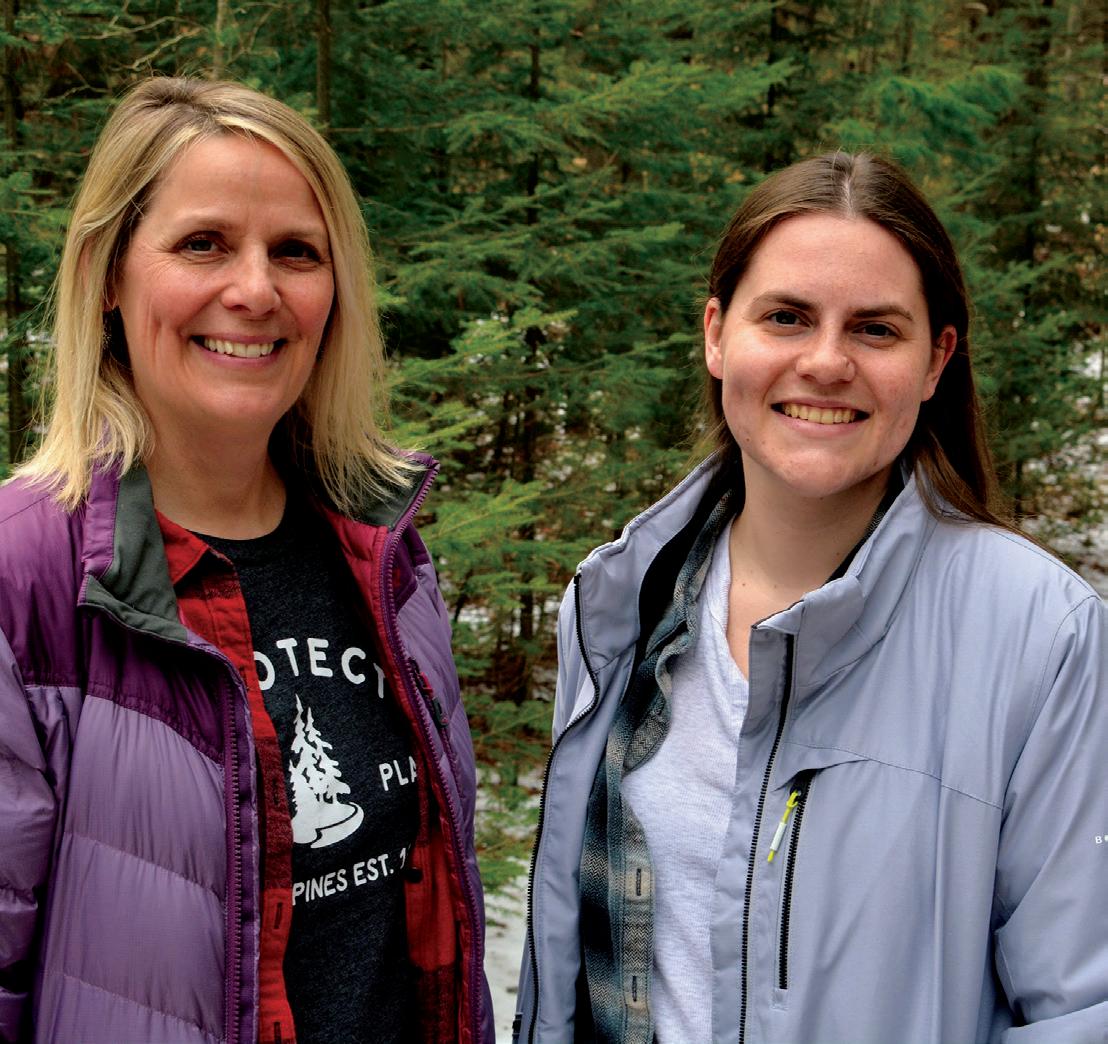

“Each acquisition in the Pigeon River Country adds to the protective buffer around its streams to keep them clean and cold, provides habitat for elk and makes Northern Michigan’s largest contiguous piece of state forest land more whole,” said Associate Director Lisha Ramsdell. “Protecting and stewarding land and water in the Pigeon River Country has always been a priority for Huron Pines and will continue that way into the future.”
Each acquisition in the Pigeon River Country adds to the protective buffer around its streams to keep them clean and cold, provides habitat for elk and makes Northern Michigan’s largest contiguous piece of state forest land more whole. “ “
- Lisha Ramsdell
Associate Director, Huron Pines
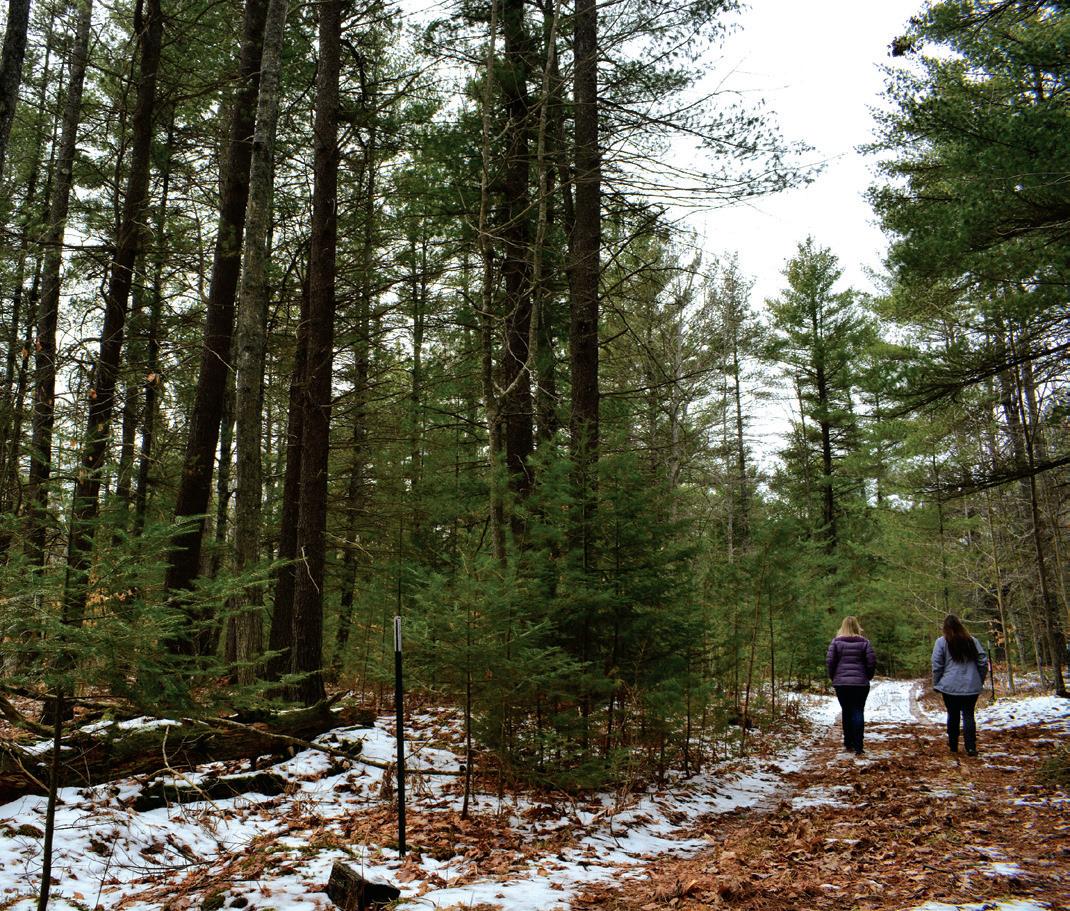







Hull Island is far from remote. That’s part of its charm and one of the reasons we were quick to support Charter Township of Oscoda’s acquisition of the property. We o ered our fi rst event at Hull Island in June, leading several one-hour hikes through the newly protected 42-acre property to see wildfl owers and explore its unique landscapes with neighbors and residents of the coastal town.
Huron Pines purchased the property in December, to hold it for the township until they secure a trust fund grant later this year. The township will then purchase the property from Huron Pines and manage it in perpetuity as a public park. The e ort to protect Hull Island as a township-owned nature preserve reflects Huron Pines’ mission of community-driven conservation, providing local municipalities with resources for owning and maintaining protected places for wildlife, water quality and public recreation.
We hosted a Wildflower Walk there June 1 to introduce residents to Hull Island and showcase some of its natural features. Among the participants were Bill Roth, a resident of nearby Au Sable and birding enthusiast who sees great potential in the property as a stopover site for migratory birds and therefore an attraction for his fellow birders.
“Oscoda is a destination for birders from all around the world and they’re always looking for nature trails to explore,” Roth said. “Being right on the river, and with all its di erent forest types, Hull Island supports all sorts of species so birders will be drawn to it for sure.”
Oscoda resident Jennifer Pavlat also joined the hike and was struck by its potential for people to connect with nature at a place close to home.
“Hull Island is a gem.” she said.
Our Community-Driven Conservation Campaign is ongoing. You can support projects like these and more by making a donation today at huronpines.org.

Convened by Huron Pines in 2021, an alliance of natural resource professionals with a shared goal of restoring Northern Michigan’s once dominant grassland ecosystems is bearing fruit.
Step off the dusty gravel road into the knee-high vegetation of the Mio Prairie and you enter a world that is remarkably biodiverse. The buzz of insects from this rolling grassland reverberates with an electric hum. Birds fl itter from one charred tree trunk to the next, pecking at the dead wood in search of bugs. Small critters rustle in the brush, unseen except by the raptors soaring overhead. In this jack pine ecosystem, one replenished by fire, life is thriving.
This is what large parts of Northern Michigan were like since the last Ice Age. Human activities like land development, timber activity, the suppression of wildfire and the introduction of invasive species have shrunk and fragmented this ecosystem to a tiny fraction of its former self. As their habitats disappeared, species followed suit, including the near extinction of Kirtland’s warbler.
The recovery of the warbler is a success story shared by many organizations, including Huron Pines, who planted young jack pines across swaths of Oscoda and neighboring counties for nesting habitat.
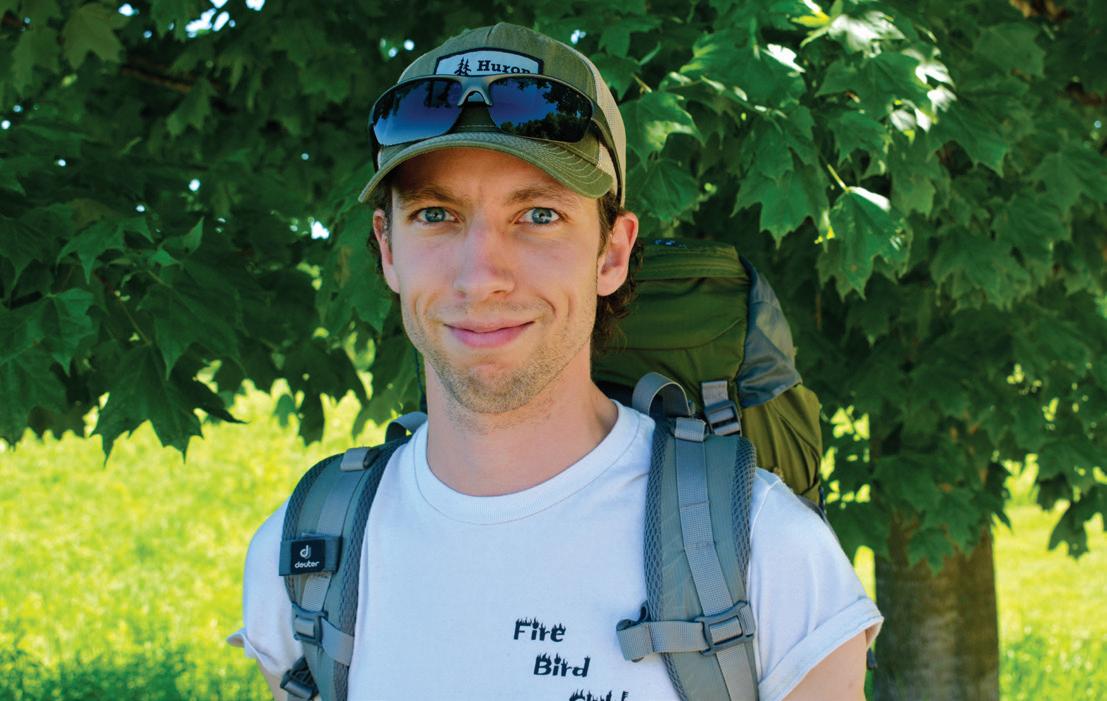

With the warbler spared, Huron Pines has convened a partnership to coordinate restoration efforts across the broader landscape for the benefit of all species.
The Northern Pine Plains Partnership aims to restore the jack pine ecosystem in a more cohesive way. This includes using prescribed fire, native plant propagation and timber management, particularly in areas where different public land ownerships meet, to achieve the greatest impact possible. Partners include natural resource professionals from the U.S. Fish & Wildlife Service, U.S. Forest Service, Michigan Department of Natural Resources, Camp Grayling and Michigan Natural Features Inventory.
“We’ve organized a team to build a unified management plan and a monitoring system we can use to gauge our success,” said Bryant Eddy, who joined Huron Pines as Habitat Project Manager in January. “This Partnership allows for a cross-pollination of ideas, where we can all work together on our shared restoration goals.”
Eddy became familiar with the jack pine ecosystem through his past work as a technician for the U.S. Forest Service, conducting wildlife surveys on the Mio Prairie. In his work with Huron Pines, Eddy manages on-the-ground projects associated with the Partnership, fosters communication between its members, and conducts restoration work on state-owned lands.
One such project took place on a dry sand prairie managed by the DNR in Oscoda County. Known as the Frost Pocket, this site features slight elevation changes that create a cooler microclimate favored by rare native plants like Allegheny plum, a small tree. Fewer wildfires have allowed other trees and shrubs to encroach on this habitat, choking out the plum trees and endangering their population. Staff from Michigan Natural Features Inventory surveyed and flagged the grove Habitat Project Manager Bryant Eddy

Top: Much of Northern Michigan was once vast grasslands with sparse trees and a penchant for fire. A new partnership is working to restore more of this native ecosystem.
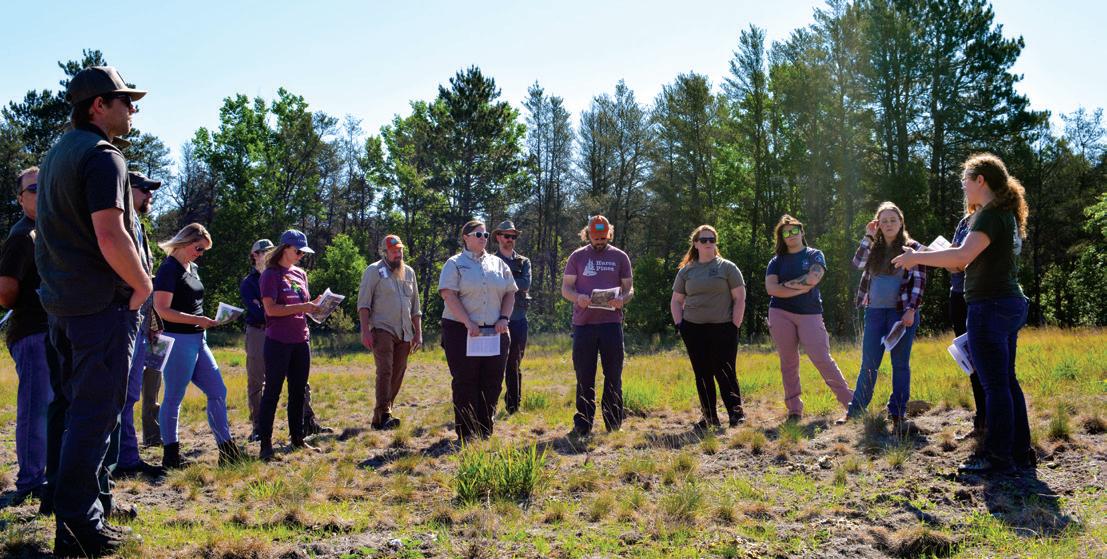




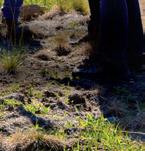
of Allegheny plum in 2023 and our Stewardship Team followed up by brushing the area to make more habitat and reduce fuels, improving their survivability when fires do occur.
Additional work by our team has included the removal of invasive plants and forestry mowing to complement prescribed burns by the DNR in Oscoda and Roscommon counties. So far, Huron Pines has enhanced more than 160 acres of state-owned land under the Partnership.
“Without Huron Pines this project would not have been possible,” DNR Wildlife Biologist Brian Piccolo said. “This Partnership has given us a plan of attack and frees us up to do more work.”
Native plant nurseries being established at Camp Grayling and in a remote corner of the Mio Prairie will support future ecosystem restoration efforts of the Partnership.
These nursery areas will produce native plant seed to enhance biodiversity at sites throughout the jack pine ecosystem. Using local genetics offers the best chance that plants will survive on this harsh landscape prone to intense heat, drought and wildfire. A U.S. Forest Service grant is funding an effort to map sites for seed collection within the Huron-Manistee National Forest.
“Restoring biodiversity to our prairies will require the propagation of native species,” said Abby Macek, Restoration Specialist with Huron Pines. “More than 20 different species found in intact prairie ecosystems will be grown here.”
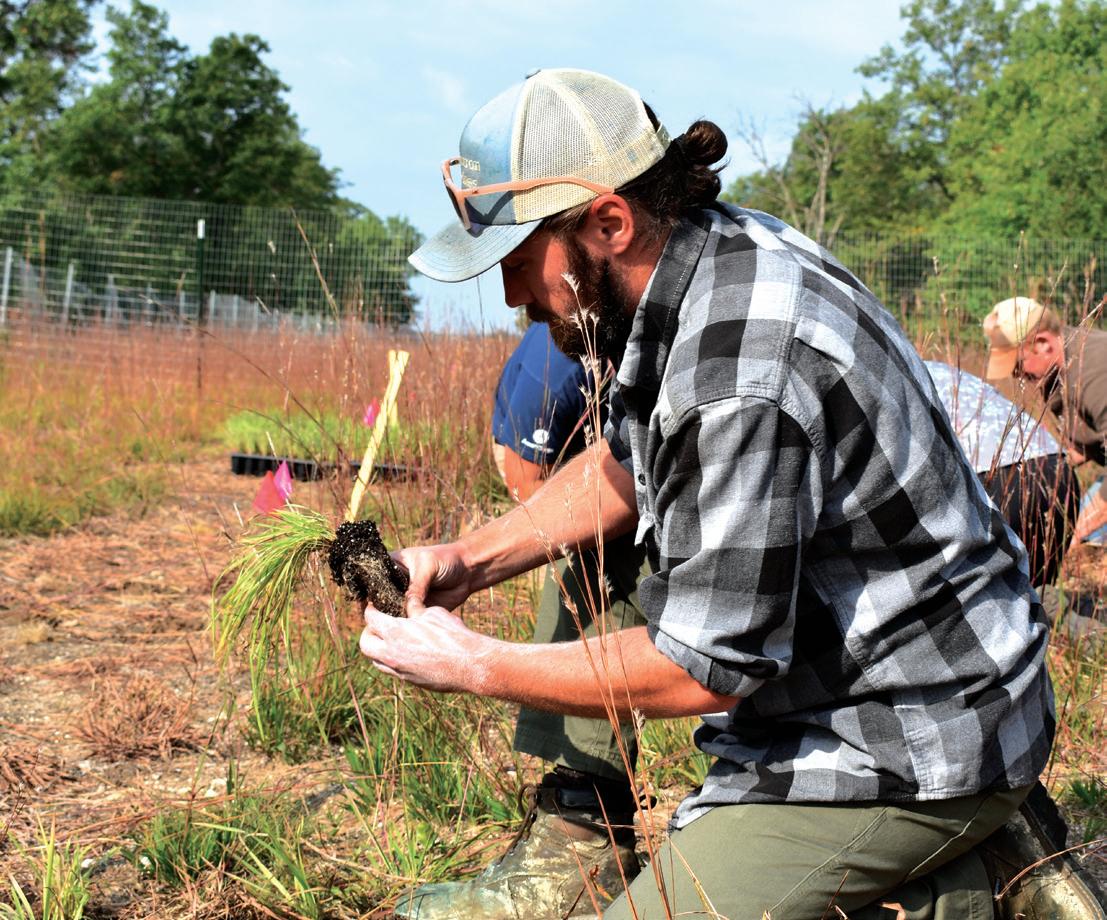


Fire is a natural part of the landscape in Northern Michigan and the use of prescribed fire can be a highly effective tool for managing invasive species, regenerating native ones and restoring degraded ecosystems.
Huron Pines hosted a fire field day in May, where 19 members of our staff and those of our partner organizations completed the physical requirements for Firefighter Type 2 certification under the standards used by state and federal agencies. Having more natural resource professionals certifi ed in prescribed fi re streamlines our ability to implement it as a land management tool. Prescribed fi res require many trained professionals to accomplish, and few organizations have enough trained staff, making the collaboration essential to an effective burn program.
“
This partnership is about working together, learning from each other and strategizing with one another to create a landscape that’s more resilient to change. “
- Lisha Ramsdell Associate Director, Huron Pines
“We don’t have the capacity to do this work alone but collectively we do,” said Steve Woods, Conservation Stewardship Director for Huron Pines.
The fire training was supported by the USDA Forest Service through the Landscape Scale Restoration grant program. We are planning another fire field day this fall and are looking forward to continued collaboration with our Partnership peers.
“This partnership is about working together, learning from each other and strategizing with one another to create a landscape that’s more resilient to change,” said Lisha Ramsdell, Associate Director for Huron Pines. “We accomplished our goals with Kirtland’s warbler, now we have an opportunity to do it again for more species.”
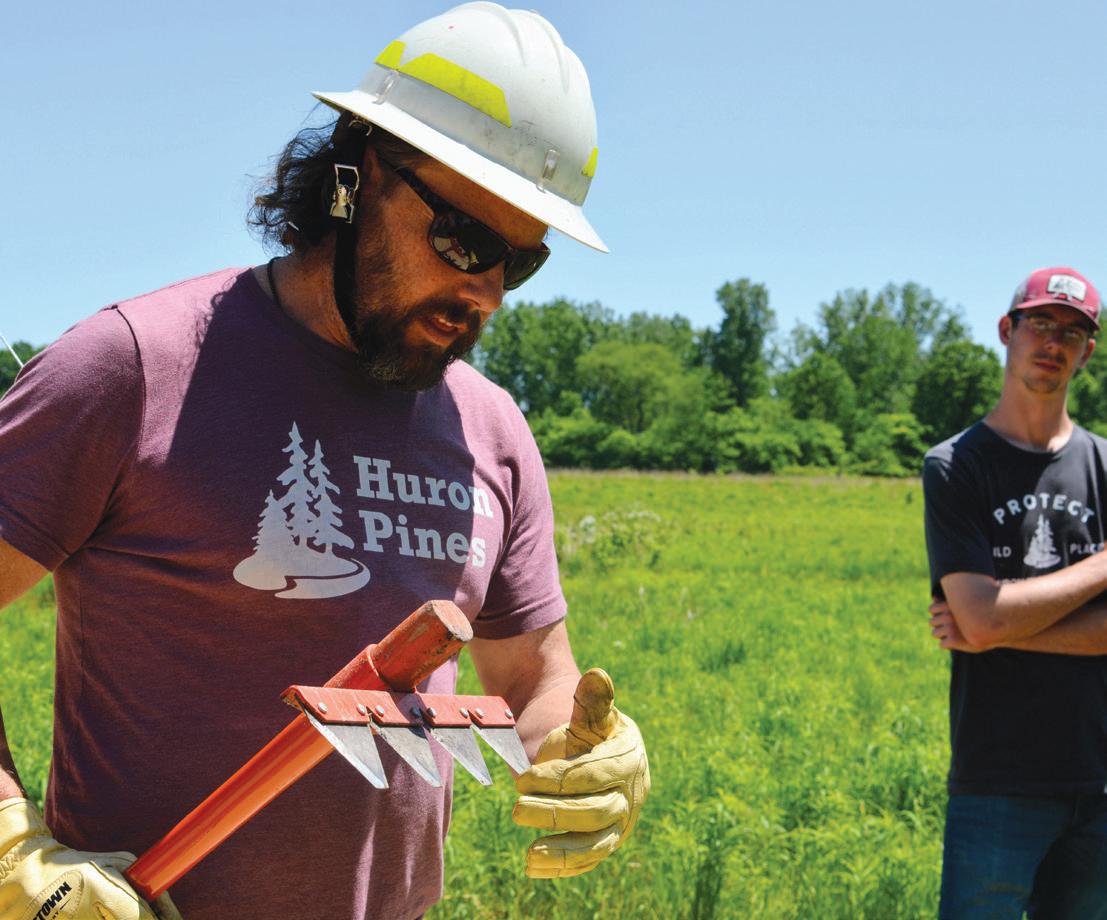




Safeguarding Lake Huron’s well-being means focusing on the human and natural communities which line her shores. In 2024 we’re accelerating efforts to equip local leaders with the tools to address invasive species, protect natural areas and reduce runoff for the sake of healthy water.
To us, a leader is any person who makes decisions that influence their community. This includes municipal staff who face big environmental challenges with limited resources but also individual residents who are motivated to do right for their land, their neighbors and the lake.
Huron Pines is empowering local leaders to create positive environmental change in their communities. We are all in this together, and we’re reminded every time we turn our gaze eastward to the shimmering waters of Lake Huron. Here’s a look at the many ways we’re making this happen in 2024 and beyond.
We welcomed a dozen local land managers to the windswept shore of Tawas Point State Park in May where we trained them to identify, report and remove some of Northern Michigan’s most noxious invasive plants.
Invasive species like Phragmites, spotted knapweed and baby’s breath upend native ecosystems, particularly those along the Lake Huron coast. To meet this challenge, Huron Pines developed an Introduction to Invasive Species Identification and Removal Training program to provide local leaders with the resources and knowledge to identify, report and treat invasive species which pose the biggest threats to the region.
Among the participants in the May training were members of the Oscoda-AuSable Chamber of Commerce and Friends of Tawas Point Lighthouse, local elected officials and private landowners. Having an array of community members who are equipped in invasive species management multiplies the impact of Huron Pines’ restoration efforts regionwide.
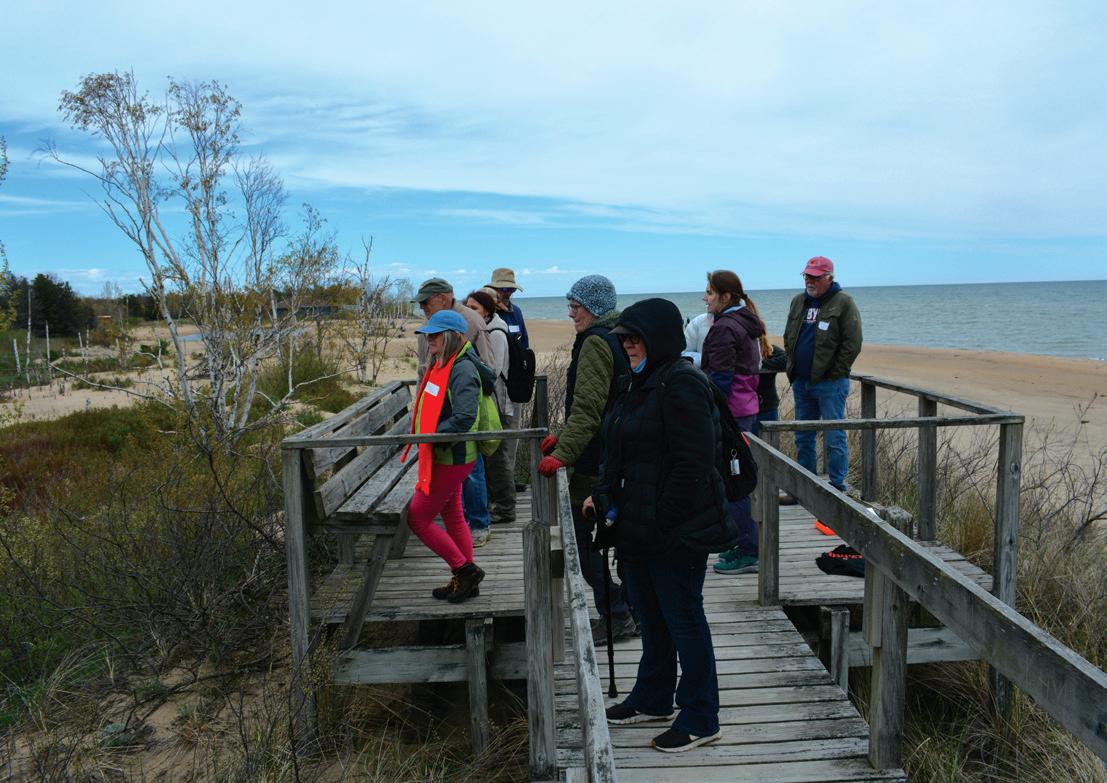
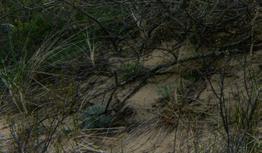
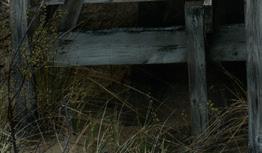
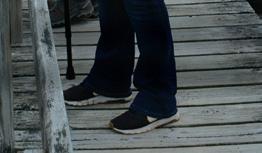

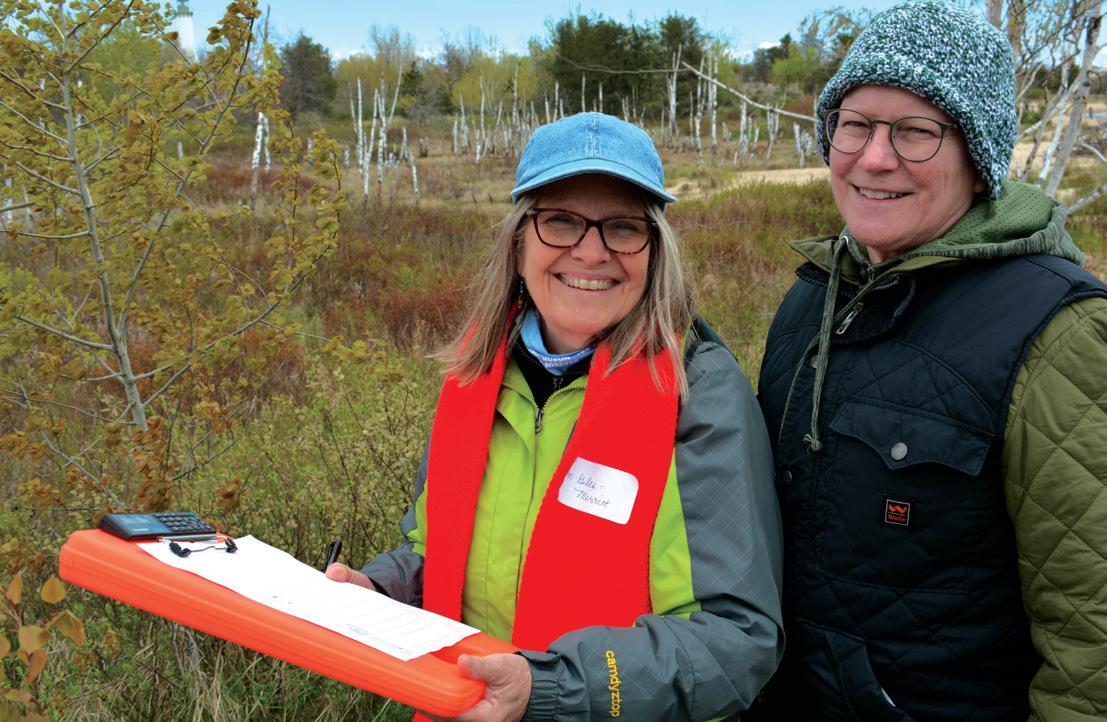





Sharon Czaika is one of three members of the Alabaster Township Parks & Recreation Committee who took part in the training. As stewards of the township’s newly acquired Lake Huron Coastal Preserve, Czaika and her colleagues sought to further their knowledge about invasive species as they continue managing the 145-acre natural area for public recreation and wildlife habitat.
“The more that can be done to educate people about invasive species, the harder we can attack the problem—and it’s a big problem,” Czaika said.
The more that can be done to educate people about invasive species, the harder we can attack the problem—and it’s a big problem. “ “
- Sharon Czaika
I n their Lake Huron Forever Pledge adopted in 2023, Alpena County, Charter Township of Alpena and the City of Alpena each identifi ed invasive species and water quality as priority issues for their communities. In support of their pledge goals, Huron Pines is providing their leaders with regional invasive species data and has produced a useful guide for public works staff to incorporate native plants into their landscaping.
Through extensive road surveys in 2023, our Stewardship Team mapped occurrences of invasive species along roadways, in neighborhoods and near bodies of water across all of Alpena County. Along with this baseline data, Huron Pines provided local officials with management recommendations for each priority species. Similar inventories are underway for Alcona, Cheboygan, Iosco and Presque Isle counties in 2024, all of which will help coordinate future treatment efforts regionwide on behalf of the Huron Coastal Invasive Species Network.
Coastal Stewardship Coordinator Amber Hubbard was invited to present a summary of the survey fi ndings at a series of public meetings in Alpena this spring.
“I see Alpena as a model community that’s prioritizing invasive species and actively looking for ways to get residents involved in their management,” Hubbard said.
Additionally, Huron Pines has developed a reference guide to aid our municipal partners in Alpena and elsewhere in incorporating native plants in their landscaping. Native plants promote the natural filtration of runoff, reducing the load on traditional stormwater infrastructure while improving water quality, among other benefits to the local ecosystem.
Titled “Reviving Local Landscapes: Native Plant Resources for Lake Huron Communities,” the guide suggests more than 30 native species of grass, shrubs and pollinator-friendly wildflowers well suited for city landscaping and lists Michigan nurseries for sourcing plants in bulk.
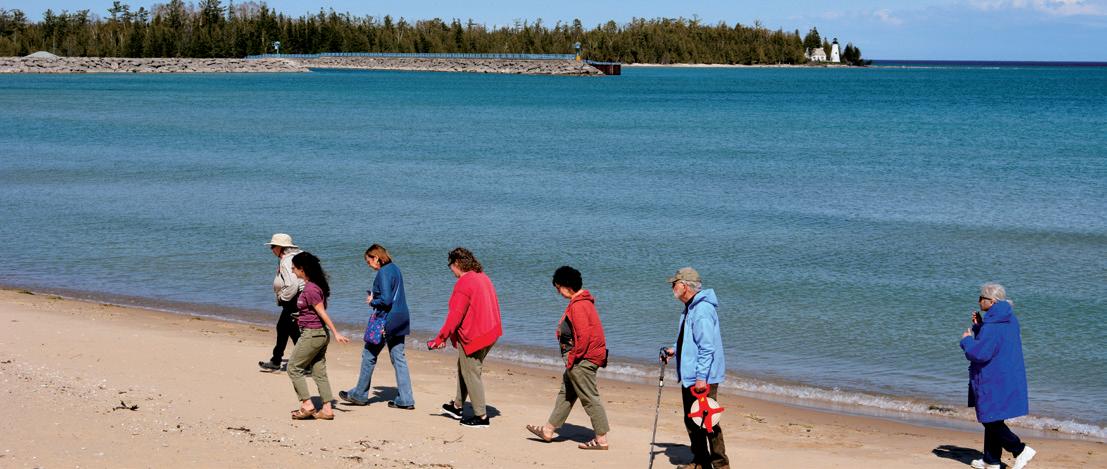


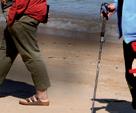








Thirty-three volunteer Coast Watchers are monitoring the Lake Huron shoreline in Northeast Michigan, contributing valuable data on erosion, storm damage, litter, invasive species and more.
Established by Lake Huron Coastal Centre in Goderich, Ontario, the Coast Watchers program engages volunteers in weekly site visits to monitor shoreline changes over time. Huron Pines has led the program on the Michigan side since 2022.
We hosted two sessions this spring in Presque Isle and East Tawas, training volunteers on the process of collecting, recording and submitting data through a mobile app to an online dashboard that catalogs all their observations.
“The dashboard lets Coast Watchers see what everyone else is reporting, and we’re getting the most consistent data yet across more sites along the shoreline,” said Maddie Khuri, Community Education Project Manager. “Having more eyes on the coast is giving us a far better understanding of the current condition of Lake Huron and helps us respond more quickly to changes.”
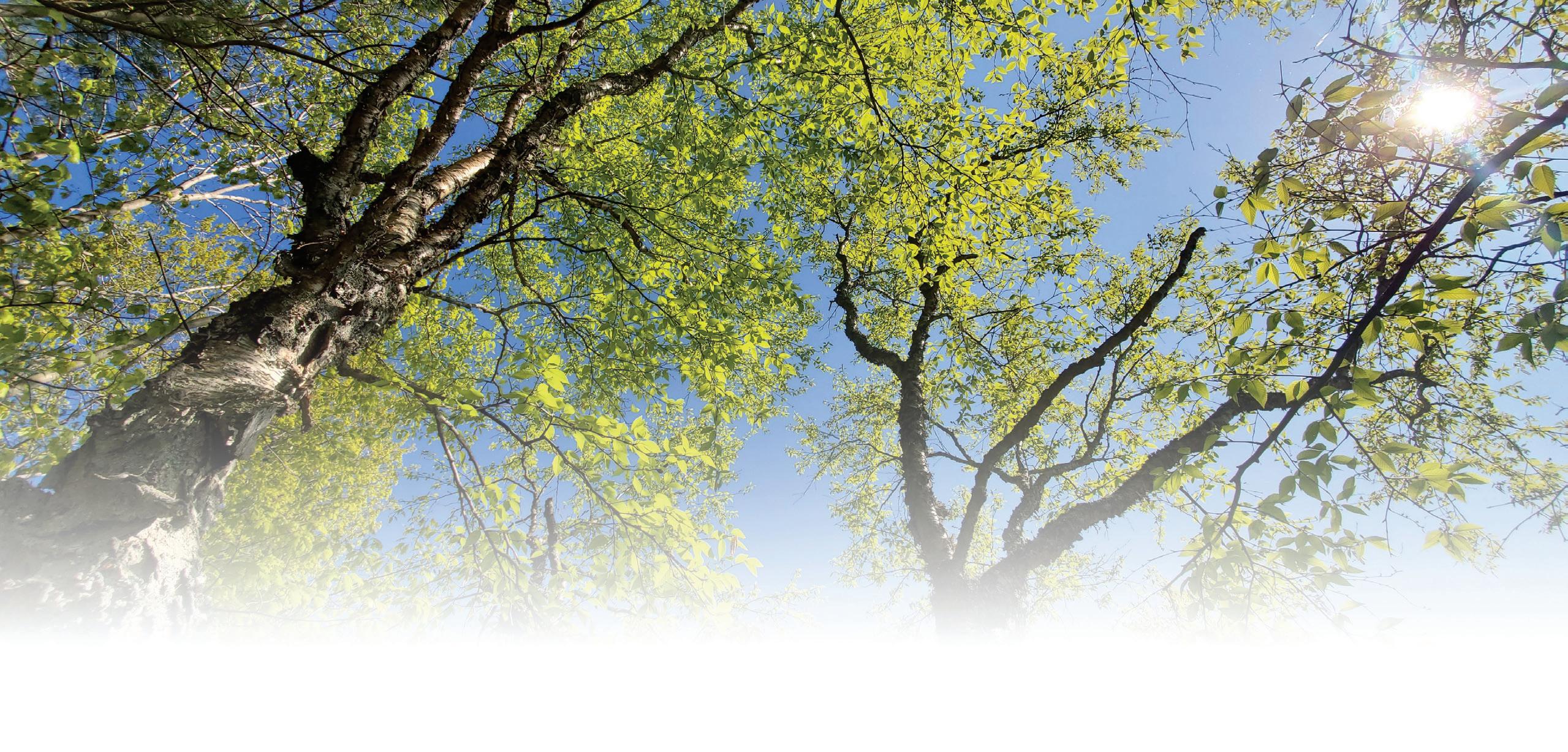
As a Legacy Member you share in the mission of Huron Pines by committing to a future legacy gift. Legacy gifts are accomplished through estates, trusts, annuities, insurance policies and other planned giving options. These gifts create an enduring source of support that enables Huron Pines to continue the vital work of ensuring healthy water, protected places and vibrant communities.
Legacy members inspire other like-minded individuals to consider their own philanthropic goals and invest in the future of Huron Pines.
Donette Spiekerman, a longtime Huron Pines supporter and Board member, shares about her passion for conservation and commitment to supporting the organization’s longevity.
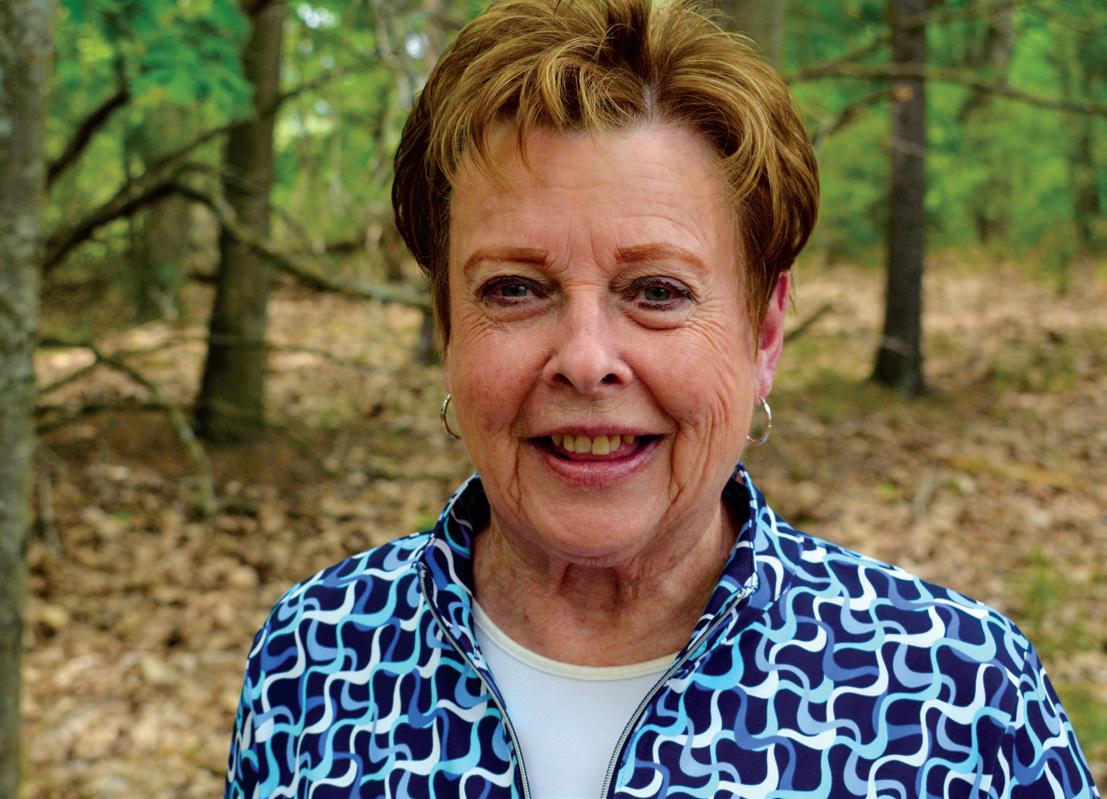

“After relocating to the East Tawas area in 2007, I joined a birding club. Conservation issues were frequently discussed and Huron Pines came to my attention as doing good work for conservation. I decided to support Huron Pines by donating. Feeling very appreciated for my support and shared passion for conservation, I continued to support Huron Pines.
I like that Huron Pines inspires community-driven change through grassroots efforts. Huron Pines staff work closely with people in every corner for the good of the region and resources. I see the organization in planning and in action, and am thankful that Huron Pines encourages and allows me to be one of those people who make things happen.
I’ve included Huron Pines in my future plans. I am confi dent that my legacy plan will be ensuring long-term protection of the region’s natural resources by providing Huron Pines the capacity to take the initiatives to the end of time.
Northeast Michigan is my community and I work hard to conserve and protect it. Rather than simply stand by, I want to be an active participant in making things happen as long as I’m able. I’m passionate about helping Huron Pines protect, preserve, enhance and conserve Lake Huron and the whole of the Great Lakes region forever. My heart swells with pride at the conservation work already being done by Huron Pines and I want to leave a legacy to continue that work for future generations.”
To read Donette’s full story, visit huronpines.org/legacygiving.
No planned gift is too big or too small; there is no minimum gift amount required to be a Huron Pines Legacy Member. To learn more about becoming a Legacy Member or to let us know you have included Huron Pines in your estate plans, please contact Brad Jensen, Executive Director, at (989) 448-2293 ext. 18 or brad@huronpines.org.